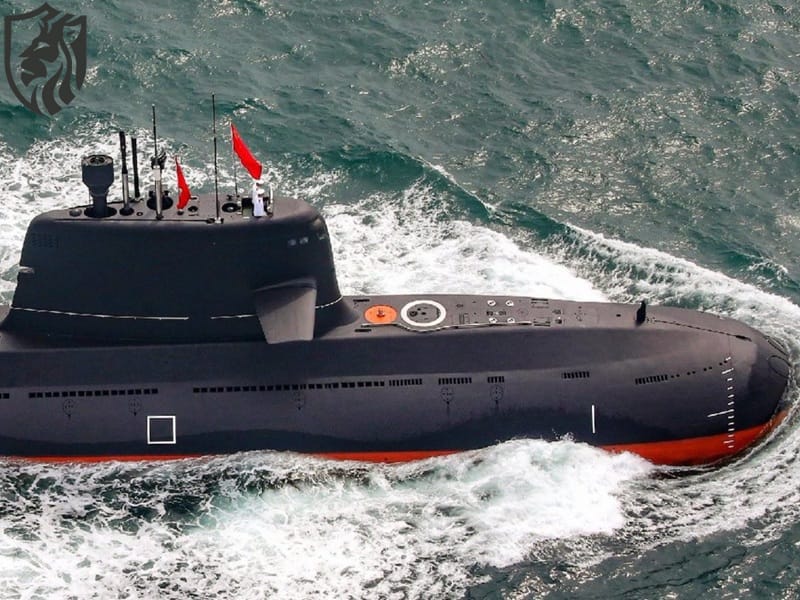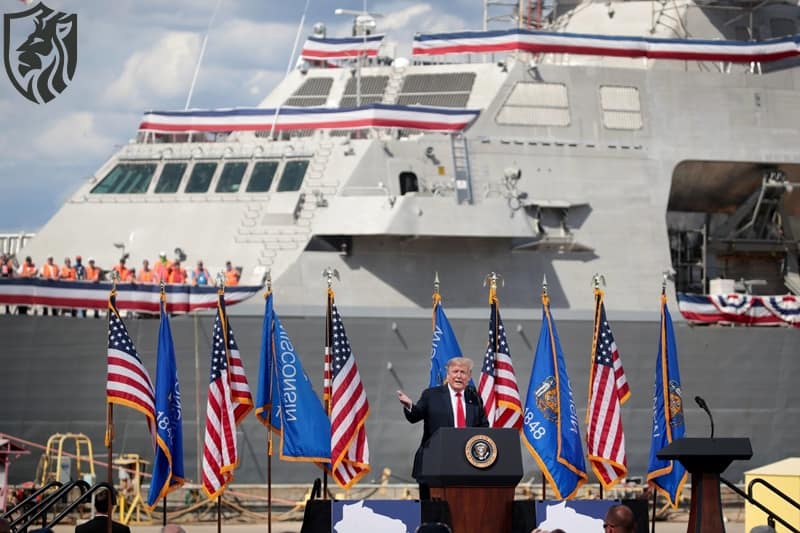
Type 039A
Egypt and China entered advanced negotiations for the Type 039A submarine, a diesel-electric vessel noted for its stealth and modern air-independent propulsion system, in the last months of 2024.
A tactical report analysis indicates that these negotiations—which also address technology transfer and localisation agreements—indicate Egypt’s desire to increase its naval capability with one of the most advanced conventional submarines in the world.
Known in NATO under the Yuan class, Type 039A marks a technological revolution for China’s defence sector and a possible game-changer for Egypt’s maritime policy. What draws Cairo to this silent killer of the sea, and what sets this submarine apart in modern naval warfare?
The Type 039A submarine is not a normal vessel. Designed by China Shipbuilding Industry Corporation and first commissioned in 2006, this submarine of the People’s Liberation Army Navy is the first one with an air-independent propulsion system, a technology enabling it to remain submerged for weeks without surfacing.
This capacity, along with its low acoustic signature, makes the Type 039A one of the quietest diesel-electric submarines in use and an important tool for avoiding enemy sonar.
Submarine Displacement
Based on data from Naval News, the submarine displaces about 3,600 tonnes when submerged, measuring about 77.6 metres in length with a beam of 8.4 metres.
Inspired by Russia’s Kilo-class submarines but polished with indigenous innovations, its teardrop-shaped, double-hulled design improves its hydrodynamic performance and stealth. An echoic tile covering the hull absorbs sonar waves, thereby further reducing its detectability.
Designed to reduce cavitation noise, a single seven-blade skewed propeller drives the vessel to speeds of up to 20 knots with a range of about 12,000 kilometres, according to The National Interest.
The Type 039A’s air-independent propulsion system—a Stirling engine-based technology created by China’s 711 Research Institute following decades of study—is central to its capability.

AIP lets the Type 039A run underwater for long stretches, usually two weeks, without using atmospheric oxygen, unlike conventional diesel-electric submarines, which must surface or use a snorkel to recharge batteries.
In contested waters, where surfacing can expose a submarine to detection by aircraft or surface ships, this endurance is a major benefit.
Type 039A
With two units probably installed and a rated kilowatt per unit, the system offers a quieter substitute for nuclear propulsion; hence, the Type 039A is equivalent to advanced Western designs such as Sweden’s Gotland class or Japan’s Soryu class, both of which also use AIP.
The Gotland, for example, employs similar Stirling engines, but the Type 039A’s larger displacement enables more weapons capacity; the Soryu’s lithium-ion batteries provide different trade-offs in endurance and cost.
Designed for adaptability in coastal and open-ocean operations, the armaments of the Type 039A are equally strong. The Yu-6 wire-guided torpedo, a heavyweight weapon ideal for anti-submarine warfare with a range of up to 45 kilometres, and the Yu-4, a passive homing torpedo for surface targets, can be launched from its six 533 mm bow-mounted torpedo tubes.
Equipped to fire the YJ-18 anti-ship cruise missile, a supersonic weapon with a range spanning more than 200 kilometers capable of delivering a 165-kilogram warhead to surface vessels, the submarine is also fitted Additionally, the Type 039A can utilise its torpedo tubes to carry and deploy 24 to 36 naval mines, serving as a powerful weapon for blocking access to strategic waterways.
An advanced battlefield management system oversees the integration of these weapons, thereby enhancing operational efficiency and precision in targeting.
USNI News article
Initially, experts viewed the Type 039A mainly as a platform for launching anti-ship cruise missiles in shallow coastal areas, as noted in a 2015 USNI News article, but its abilities have since improved to include missions in deeper ocean waters.
Given Egypt’s strategic priorities, it is not surprising that the nation is interested in the Type 039A. Cairo runs a small but competent submarine fleet comprising four Russian Kilo-class submarines acquired in the 1980s and 1990s and four German-built Type 209/1400 submarines.
Having sold more than 60 units globally, the Type 209, a small diesel-electric design, is well-known for dependability and export success.
Its conventional propulsion, however, limits its submerged endurance to days instead of weeks, and its armaments, while adequate, lack the advanced missile capability of the Type 039A.
Though they use older technology and lack AIP, the Kilo-class submarines—especially the Project 636 variant—share traits with the Type 039A, including a teardrop hull and low acoustic signature.
With its modern sensors and missiles as well as its ability to remain submerged longer, the Type 039A closes important gaps in Egypt’s fleet and provides increased deterrent and reconnaissance capability in the Mediterranean and Red Seas.
Zohr field
Egypt’s security and financial goals closely align with the operational requirements of its navy. While offshore gas fields in the Mediterranean, such as the Zohr field, are central to Egypt’s energy aspirations, the Suez Canal, a vital artery for world trade, brings in billions of yearly income.
Maintaining these resources requires a strong naval presence capable of tracking marine traffic and deterring potential threats. The stealth and endurance of the Type 039A make it perfect for covert operations, intelligence collecting, and quick reaction to marine events.
Its ability to remain hidden near key gas fields or shipping lanes could give Egypt a major strategic advantage.
This stealth would help protect vital economic lifelines from potential threats.
The submarine’s missile systems can strike surface targets from long range, outperforming Egypt’s torpedo-focused current fleet. Adding a Chinese submarine to Egypt’s navy presents logistical and training challenges. The existing Type 209 and Kilo-class rely on established Western and Russian systems.
Switching to the Type 039A would require Egyptian crews to learn entirely new technologies. This likely means extensive training programmes in China.
Egyptian Ministry of Military Production
A March 2025 Tactical Report confirmed that talks on technology transfer are ongoing. This could allow local assembly or maintenance under the Egyptian Ministry of Military Production.
Such an arrangement would demand major investment in infrastructure and technical expertise. However, it would reduce reliance on foreign support and create local jobs.
The Type 039A’s AIP system is complex and demands specialised upkeep. Even advanced navies face difficulties maintaining such systems reliably.
The human factor is just as important as the technology itself. Operating this submarine requires crews skilled in AIP propulsion and advanced sonar systems.
Egyptian sailors would likely attend intensive training courses in China. They would learn to coordinate missile launches and manage ultra-quiet operations.
Training could take place at PLAN submarine schools. These courses emphasise stealth tactics, including using thermoclines to evade sonar detection.
Russian Kilo-class
Chinese engineers deserve recognition for developing the Type 039A. They drew lessons from Russian Kilo-class designs and Western innovations.
The 711 Research Institute, responsible for the AIP system, overcame decades of technical hurdles. Its work positioned China as a leader in conventional submarine design.
China’s pursuit of an Egyptian deal reflects broader global arms ambitions. The Type 039A has already been sold to Pakistan and Thailand in S20 and S26T export versions.
Pakistan’s 2015 order for eight S20 submarines includes local construction at Karachi Shipyard. This model could be replicated in Egypt. Thailand chose the S26T in 2017 despite budget concerns, citing its affordability and strong performance.
A 2024 Business Standard report says China has built 21 Type 039A/B for its navy. This production scale lowers costs, making exports more competitive.
Wuhan and Jiangnan shipyards build the Type 039A. These facilities rank among the most active submarine production centres in the world.

Cold War-era
Egypt maintained a Cold War-era strategy of balancing ties with the United States, the Soviet Union, and other powers. This allowed Egypt to diversify arms suppliers, ensuring strategic autonomy and avoiding overdependence on any single source.
In 2020, Egypt bought Russian Su-35 fighters, while in 2015, it acquired French Mistral-class amphibious assault ships. These purchases show Egypt’s ongoing interest in enhancing its military capabilities and maintaining multiple strategic partnerships.
Egypt is now exploring a deal for Chinese Type 039A submarines, continuing its pattern of using varied foreign technologies. The aim is to strengthen defense capabilities while building closer ties with Beijing and broadening sources of advanced weaponry.
Diesel-electric submarines like the Type 039A are ideal for regional powers operating in confined waters near home.
Unlike nuclear submarines in U.S. or Russian fleets, these boats are cheaper, easier to maintain, and highly effective locally.
Each Type 039A is estimated to cost $400–500 million, much less than the $2 billion Virginia-class nuclear submarine. Such affordability makes them attractive for Egypt, which seeks capability without the costs of global power projection vessels.
Picture a Type 039A patrolling near the Zohr gas field, staying hidden for days and monitoring all nearby maritime traffic. It could track ships using advanced sonar, possibly influenced by Russian MGK-500 systems or older French Thales designs.
YJ-18 missile
If a hostile ship approached, the submarine could fire a YJ-18 missile from 200 kilometres away, hitting its target precisely. It would then retreat undetected into the depths, ensuring Egypt’s ability to protect economic interests and maintain a strategic presence.
The Type 039A’s design can be compared to other advanced submarines in global service.
Germany’s Type 212A, with air-independent propulsion, shares similar stealth advantages despite its smaller size and coastal operations focus.
However, the Type 212A mainly carries torpedoes and uses a non-magnetic steel hull for exceptional stealth.
France’s Scorpene class, used by Chile and India, lacks air-independent propulsion in most models, limiting submerged endurance.
Russia’s improved Kilo-class submarines are stealthy and well-armed but lack the extended covert endurance of AIP-equipped designs. The Type 039A balances stealth, firepower, and affordability, making it a strong contender in the global submarine market.
According to a November 2024 tactical report, Egypt and China are still negotiating a potential Type 039A purchase. Technology transfer is on the table, suggesting Egypt aims to maintain and possibly produce these submarines domestically in the future.
Conclusion
This ambition aligns with Cairo’s broader push for industrial self-sufficiency in the defence sector. Egypt’s co-production of T-90 tanks with Russia and its licensed assembly of French Gowind corvettes reflect this ambition.
For China, the submarine deal would strengthen its role as a major Middle Eastern arms supplier. This is a market traditionally dominated by Western and Russian defense industries.
Success in Egypt’s Type 039A programme could pave the way for increased Chinese submarine exports globally. Such success might even challenge the market share of long-established naval shipbuilders.
Broadly speaking, the potential purchase highlights a shift in naval warfare priorities. Conventional submarines remain essential tools for regional security and maritime deterrence. For Egypt, the Type 039A offers a chance to modernise its navy and boost maritime sovereignty.
Moreover, it could play a vital role in protecting Egypt’s economic lifelines, including offshore gas fields and critical shipping lanes. By safeguarding these assets, Cairo would enhance both its national security and its ability to project influence in the region.
From China’s perspective, the agreement would demonstrate its engineering expertise and reinforce its growing influence in the global defense market.
It would also be a major step in extending Beijing’s strategic influence in Asia far beyond its conventional borders.
However, despite the promise, doubts persist over Egypt’s ability to handle the logistical demands of operating a Chinese-built submarine.
Furthermore, questions remain about how well the Type 039A would perform in the Mediterranean’s intricate and unpredictable maritime environment.
Ultimately, only time will tell whether this silent predator becomes the centrepiece of Cairo’s naval modernisation or remains an ambitious experiment.
References
- Naval News—Type 039A Yuan-class submarine
- Tactical Report—Egypt negotiations for Type 039A submarines
- The National Interest—China’s Yuan-class submarines
- USNI News—Analysis of Type 039A capabilities
- Business Standard—China’s submarine export strategy
- Naval Technology—Yuan-class Submarine Overview
- Defence News—Egypt’s military procurement
- China Power Project—Chinese Submarine Advancements
- Global Security—Type 039A submarine details









